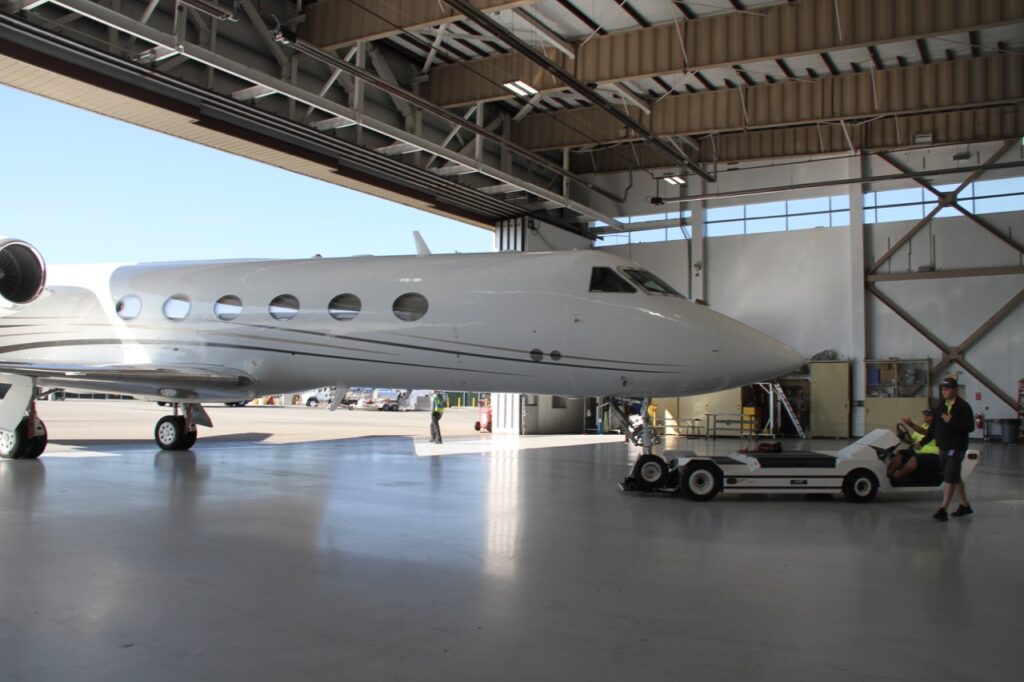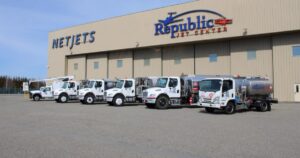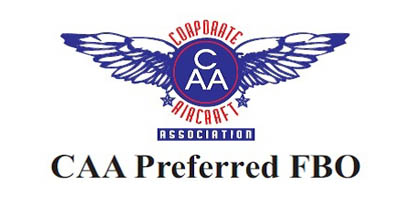In the United States, there are 34,200 experimental lightcraft, 167,100 fixed-wing general aviation aircraft, with a total of 5,000 aircraft in the sky during peak operational times.
Where are all these airplanes located when not in the air? In just the commercial fleet alone there was a total of 7,356 aircraft in 2018. It is common to see a large number of aircraft parked outside at airports.
What is the reason why some aircraft owners hangar space to store their aircraft? How important is it to your aircraft? Read on to learn why storing your airplane in a hangar is important to its maintenance.
Types of Hangar Space
An aircraft hangar is basically a garage for your airplane. The styles vary from simple cloth structures to deluxe layouts with several other facilities inside. The goal is to reduce the maintenance time needed in the hangar and maximize time in the sky.
Temporary Fabric Structures
This is an ideal storage system for temporary hangar needs. It consists of a PVC frame and fabric.
These temporary systems can be custom made to fit the size of your aircraft. They are easy to relocate and less expensive than building, purchasing, or renting a permanent structure.
Aluminum Frame
The aluminum frame hangar will sustain high winds and snow. It lasts well in cold, harsh climates and provides excellent protection. This hangar is able to support fire suppression equipment and fall arrest systems. Protecting your aircraft from fire damage is another option you will want to consider.
What Are Fall Arrest Systems?
Fall arrest systems are a requirement for aircraft hangars where maintenance work is being performed. The requirements when servicing military or small private aircraft are different than in larger hangars that service large, commercial aircraft.
The fall system allows maintenance to be safely performed on the aircraft while allowing access to the wings, fuselage, and tail of military, commercial, and private aircraft.
Purpose of Aircraft Hangars
The obvious purpose of having hangar space is the storage of your airplane. While the FAA regulates the use of aircraft hangar space, as long as you are using it to store your aircraft, you can also use it for storage of non-aeronautical items as well.
A hangar protects your aircraft from the elements. All aircraft needs to be kept clean. Having to constantly clean off dirt, ice, or snow prior to flying is time-consuming and inconvenient. Even exposure to heat, cold, and rainy weather increases the amount of maintenance you will need to perform on your aircraft.
With the protection of a hangar, your aircraft will stay in better condition. It will not require cleaning as often and will reduce the frequency of paint touch-ups. If you live in a cold climate, a hangar with a heating system will keep the oil and engine in better condition.
The combination of protection from the elements, dirt, and insects will reduce the overall cost of maintenance. If an airplane is not protected from the weather, its operation will show the effects of exposure. The plane will age at a faster rate. Aircraft construction uses metal making them inherently subject to corrosion.
Protection From Corrosion
Contributing to the development of corrosion on an aircraft is the environment, how often it is cleaned, and whether or not it is stored in a hangar. Aircraft kept in coastal areas are more prone to corrosion.
Aircraft available for sale in areas such as the Pacific Coast, Gulf Coast, and Florida are less popular with buyers because of a greater risk of hidden rust. Buyers are suspicious of a newly painted aircraft because it could potentially be concealing corrosion.
Airplane corrosion does not appear in the rust color the average person thinks of. It usually appears as a gray or white dulling of the aluminum surface. It will then progress and become more severe, pitting, and destroying the metal.
If corrosion remains untreated on an airplane, it will cause the airplane to become unairworthy within a few years. Storing aircraft in a hangar combined with frequent washing and treatment with rust inhibitors dramatically reduces the risk of deterioration from corrosion.
Protection From Vandalism and Theft
Your airplane and its components are expensive pieces of hardware. More importantly, an aircraft is a personal and meaningful machine to many pilots. It represents not only an investment, but also the time, attention and care show the passion almost all pilots share. Though airports are more secure than ever, the possibility of theft is a reality. Thieves may target fuel, propellers, radio, parts, equipment, or other valuables. Republic Airport and our ramp at Republic Jet Center are some of the safest locations of any airport and monitored 24 hours a day. However, storing your aircraft in a hangar can further reduce the chance of theft.
Reduce Costs
Storing your aircraft in a hangar will have a significant impact on the overall cost of airplane maintenance. Exposure to the elements, including the sun’s UV rays creates wear and tear on the paint and damage to the upholstery. That is not the only savings.
Your cost for insurance may be lower if you store your aircraft in a hangar. By keeping your airplane inside a hangar you reduce the risk of damage from the elements, vandalism, and theft. This may be impacted further if you have an individual hangar that has an increased level of security.
If the cost of an individual hangar is beyond what you want to pay, consider a shared space. Hangar space rentals may be available where you can share the space and expense with one or more other pilots. This offers protection and will have a positive impact on your insurance costs.
Types of Hanger Facilities
Depending on what you intend to do within your hangar space and the type of aircraft being stored, plus whether your airplane is private or commercial will impact the type of hangar you need. There are five types of hangar facilities to choose from:
- Hangar section
- Shop section
- Warehouse section
- Building utility section
- Office and other specialty sections
To determine what you need, consider the following:
- The type of aircraft to be stored in the hangar
- What maintenance will be done inside the hangar
- How much shop space is needed to perform planned maintenance
- How much warehouse area is needed for planned maintenance
- Amount of space needed for the office section
- Amount of space needed for building utility section
- Deciding on other special areas needed such as a bathroom, sleeping area, locker room, dining area, or lobby.
Other considerations include whether you need to allow room for the possible storage of additional aircraft in the same hangar.
When Selecting a Hangar
You now know the benefits of storing your aircraft in a hangar and the types of hangars available. Here are other things to consider when making your decision:
- How close the airport is to your home or business
- How often you use your airplane
- The value of your aircraft
- The use of your aircraft for personal or business
- Airport amenities
- The cost of hangar space you desire
- The benefits and negatives of sharing a hangar with other pilots
- The benefits and negatives of having a private hangar
- The severity of weather your plane experiences if left outside
- The availability of additional safety equipment
- Whether the airport has an on-site repair station
The way you rate the importance of these factors will impact your selection of a hangar that meets your needs. If a hangar is equipped with a fire suppression system, that provides an extra layer of protection for your aircraft and may further reduce your insurance costs.
Aircraft and Hangar Insurance
Aircraft insurance covers both liability and property coverage. It is recommended you contact your aviation insurance company prior to renting or purchasing a hangar to find out what options may reduce the cost of your coverage.
You will want to purchase coverage for both your airplane and your hangar. Hangar insurance provides coverage for mobile equipment and mechanics tools you store inside your hangar.
Airport Amenities
Airport amenities can mean the difference in comfort and convenience, especially if you use your airplane for business.
Republic Jet Center offers a 100,000 square foot facility with self-serve snacks and beverages in a lounge. Enjoy a large flat-screen TV or a scenic view of the outside while relaxing in plush seating. Their concierge service can assist you with dining reservations, ground transportation, accommodations, or even charter a helicopter flight to the Hamptons or Manhattan.
In addition to prime comfort amenities they also have a state of the art full-service area that performs routine servicing, aircraft inspections, can other required maintenance.
Republic Jet Center also offers both short and long-term hangar storage onsite. If you are in the market for private aircraft, they can assist you in the upgrading, selling, or purchasing of private aircraft.
When selecting a location for your hangar, consider not only what you need now, but what services you may need in the future so everything is within easy access.
Hangars Are Important
There are numerous benefits to having hangar space for your aircraft. If you are looking for protection for your aircraft, compare the hangar options, ease of access from your home, and amenities available at the airport.
Republic Jet Center has a new Long Island facility at Republic Airport (KRFG), only 30 miles from New York City. Contact us using our online form or call 631-881-9520 with any questions you have. We are open 24 hours a day, 365 days a year, so pick up the phone and call now!











